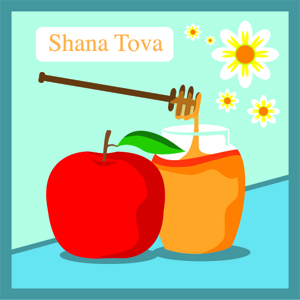Shalom chaverim (hello friends),
As the resident Jew in the Food24 office, I’m getting a lot
of Shana Tovas and happy Rosh Hashanahs.
So it’s clear to me that most people know, Jewish or not,
that Rosh Hashanah is a big holiday for the Jewish culture and a kick start to
the High Holy Days.
These “High Holy Days” are a series of observances, celebratory
and mournful, derived from the Northern Hemisphere’s harvest season.
I won’t be explaining
the tens of holidays in September and October that are linked with Rosh
Hashanah because it took me 13 years of Jewish schooling to learn and forget
them and we simply don’t have that kind of time.
What’s most important about the majority of Jewish holidays,
to most Jews, is the catering. So here’s
the scoop on how to feast, or make a feast, for Rosh Hashanah; whether you’re religious,
atheist, or a foodie, we all enjoy a good smorgasbord!
What is Rosh Hashanah?
It’s the Jewish New Year according to the Jewish calendar, which was
created about 5000 years ago and was pretty much based on the harvests in the
Northern Hemisphere.
Why does everyone say
Shana Tova?
Shana Tova means “good year” or “have a good year,” feel free to throw those
words around like a Jewish badass.
What’s up with that hallowed
out ram’s horn aka Shofar?
Traditionally used to announce the holidays to the village, the “Shofar” is
sort of like church bells calling people to come and pray. During the prayer services, the Shofar is only
blown this time of year; the Rabbi will sound the Shofar inside the temple. And, if you are lucky, you can try to blow
the shofar yourself without fainting.
The Feast:
Religious wine – it’s a mitzvah (good deed) to drink and celebrate… so
maybe don’t get black out drunk, but if you get close to it, you’ll be in the
company of 5000 years of Jews before you.
South Africa makes some great kosher wine and for most Jews, wine doesn’t have
to be kosher, so any bottle of red will do.
Apples dipped in honey – the most
popular and widely spread, apples dipped in honey represents a sweet new year.
Round challah (aka kitke at Checkers) – usually bread is braided for Friday
night dinner but this round version represents a happy full year and the circle
of life and is only eaten on Rosh Hashanah.
Gefilte fish – a loaf
of chopped up fish that turns into a fish meatloaf, and is certainly not for
everyone.
Chicken soup – what
would a Jewish meal be without this classic, brothy delight?
Kugel – a baked noodle dish with cheese, raisins, and
cinnamon.
Sweet brisket –
the traditional slow cooked brisket with added sweetness for a sweet New Year.
Honey cake – traditional
sweet pound cake glazed or soaked in honey.
Jewish custard tart
– a layer of thin pancake then icing, thin pancake, icing, thin pancake, icing.
By this point I hope you’ll be stuffed, rosy cheeked, full
of wine, and ready to give the shofar a go.
Shana Tova!

